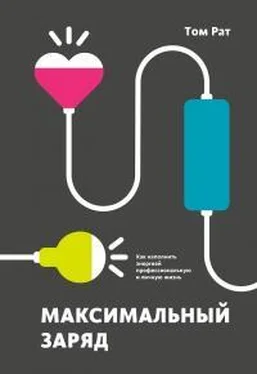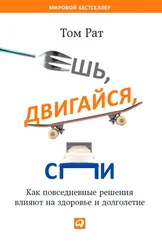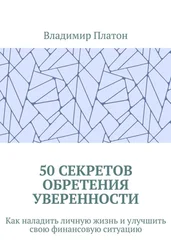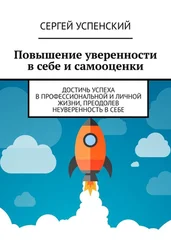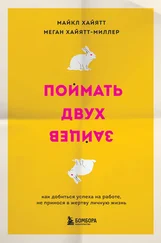Sheridan, B. (2012, June 19). Is cue the cure for information overload? Bloomberg Business Week Magazine. Retrieved from www.businessweek.com/articles/2012-06-19/is-cue-the-cure-for-information-overload.
Iyer, P. (2011, December 29). The joy of quiet. New York Times. Retrieved from www.nytimes.com/2012/01/01/opinion/sunday/the-joy-of-quiet.html.
Woollaston, V. (2013, October 8). How often do you check your phone? The average person does it 110 times a DAY (and up to every 6 seconds in the evening). Daily Mail. Retrieved from www.dailymail.co.uk/sciencetech/article-2449632/How-check-phone-The-average-person-does-110-times-DAY-6-seconds-evening.html.
May we have your attention, please? (2008, June 11). Bloomberg Business Week Magazine. Retrieved from www.businessweek.com/stories/2008-06-11/may-we-have-your-attention-please.
Schwartz, T. & Porath, C. (2014, May 30). Why you hate work. New York Times. Retrieved from www.nytimes.com/2014/06/01/opinion/sunday/why-you-hate-work.html?_r=0.
Killingsworth, M. A. & Gilbert, D. T. (2010). A wandering mind is an unhappy mind. Science, 330, 932. doi:10.1126/science.1192439.
Forrester, D. P. (2014, August 6). How to train yourself to stop multitasking. Bloomberg Buinessweek. Retrieved from www.businessweek.com/articles/2014-08-06/how-to-train-yourself-to-stop-multitasking.
Say “no” to interruptions, “yes” to better work. (2014, July 14). Human Factors and Ergonomics Society. Retrieved from www.hfes.org/Web/Detail-News.aspx?ID=343.
Classical conditioning. (n.d.). Retrieved December 22, 2014 from Wikipedia: en.wikipedia.org/wiki/Classical_conditioning.
Ott, A. (2010, November 11). How social media has changed to workplace. Retrieved from www.fastcompany.com/1701850/how-social-media-has-changed-workplace-study.
Kushlev, K. & Dunn, E. Q. (2015). Checking email less frequently reduces stress. Computers in Human Behavior, 43, 220–228. doi:10.1016/j.chb.2014.11.005.
Barber, L. K. & Santuzzi, A. M. (2014). Please respond ASAP: Workplace telepressure and employee recovery. Journal of Occupational Health Psychology, Advance online publication. dx.doi.org/10.1037/a0038278.
Collaborative and social tools increase employee interruptions. (2011). [Graphic illustration]. T & D, 65(7), 23.
Baer, D. (2013, August 2). What to do when email is sucking away your soul. Retrieved from www.fastcompany.com/3015162/leadership-now/what-to-do-when-email-is-sucking-away-your-soul.
Глава 8
Walker, T. (2014, June 30). How Finland keeps kids focused through free play. The Atlantic. Retrieved from www.theatlantic.com/education/archive/2014/06/how-finland-keeps-kids-focused/373544.
Pellegrini, A. D. & Davis, P. D. (1993). Relations between children’s playground and classroom behavior. British Journal of Educational Psychology, 63, 88–95. doi:10.1111/j.2044-8279.1993.tb01043.x.
Gifford, J. (2014, July 31). The rule of 52 and 17: It’s random, but it ups your productivity. Retrieved from www.themuse.com/advice/the-rule-of-52-and-17-its-random-but-it-ups-your-productivity.
Purpose in life may protect against harmful changes in the brain associated with Alzheimer’s disease. (2012, May 4). Retrieved from www.newswise.com/articles/purpose-in-life-may-protect-against-harmful-changes-in-the-brain-associated-with-alzheimer-s-disease.
Boyle, P. A., Buchman, A. S., Wilson, R. S., Yu, L., Schneider, J. A., & Bennett, D. A. (2012). Effect of purpose in life on the relation between Alzheimer disease pathologic changes on cognitive function in advanced age. JAMA Psychiatry, 69, 499–504. doi:10.1001/archgenpsychiatry.2011.1487.
Association for Psychological Science. (2014, May 12). Having a sense of purpose may add years to your life. [Press release]. Retrieved from www.psychologicalscience.org/index.php/news/releases/having-a-sense-of-purpose-in-life-may-add-years-to-your-life.html?utm_source=pressrelease&utm_medium=eureka&utm_campaign=purposelongevity.
Hill, P. L., & Turiano, N. A. (2014). Purpose in life as a predictor of mortality across adulthood. Psychological Science, 25, 1482–1486. doi:10.1177/0956797614531799.
Stillman, J. (2013, January 15). Best way to motivate your team for free. Retrieved from www.inc.com/jessica-stillman/the-best-way-to-motivate-your-team-for-free.html.
Miller, A. (2013). The science of “karma.” APA Monitor, 44(9), 28.
The human impact of our work: GE staff meet cancer survivors. Retrieved December 22, 2014 from newsroom.gehealthcare.com/human-impactof-our-work/.
Radiological Society of North America. (2008, December 2). Patient photos spur radiologist empathy and eye for detail. [Press release]. Retrieved from www2.rsna.org/timssnet/media/pressreleases/pr_target.cfm?ID=389.
Powers, J. (2013, December 26). 10 inexpensive ways to boost employee morale. Retrieved from www.ragan.com/Main/Articles/10_inexpensive_ways_to_boost_employee_morale_43589.aspx.
Grant, A. (2014, January 30). Give and take: The path from independence to success. Psychology Today. Retrieved from http://www.psychologytoday.com/blog/give-and-take/201401/the-no-1-feature-meaningless-job.
Grant, A. (2011, June). How customers can rally your troops. Harvard Business Review. Retrieved from hbr.org/2011/06/how-customers-can-rally-your-troops/ar/1.
Hill, P. L. & Turiano, N. A. (2014). Purpose in life as a predictor of mortality across adulthood. Psychological Science, 25, 1482–1486. doi:10.1177/0956797614531799.
Глава 9
Diener, E., Sandvik, E., & Pavot, W. (2009). Happiness is the frequency, not the intensity of positive versus negative affect. Assessing Well-Being, 39, 213–231. doi:10.1007/978-90-481-2354-4_10.
Опрос 10 564 респондентов, разработанный Missionday и проведенный при помощи Google Consumer Surveys в августе–декабре 2014 года. Подробнее о методологии Google см.: www.google.com/insights/consumer-surveys/static/consumer_surveys_whitepaper_v2.pdf.
Nooyi, I. (n.d.). The best advice I ever got. Fortune. Retrieved from archive.fortune.com/galleries/2008/fortune/0804/gallery.bestadvice.fortune/7.html.
Christakis, N. A. & Fowler, J. H. (2007). The spread of obesity in a large social network over 32 years. New England Journal of Medicine, 357, 370–379. doi:10.1056/NEJMsa066082.
Fowler, J. H. & Christakis, N. A. (2008). Dynamic spread of happiness in a large social network: longitudinal analysis over 20 years in the Framingham Heart Study. British Medical Journal, 337, 1–9. doi:10.1136/bmj.a2338.
Kramer, A. D. I., Guillory, J. E., & Hancock, J. T. (2014). Experimental evidence of massive scale emotional contagion through social networks. Proceedings of the National Academy of Sciences, 111, 8788–8790. doi:10.1073/pnas.1320040111.
Глава 10
Gottmann, J. M. & Silver, N. (2000). The seven principles for making marriage work: A practical guide from the country’s foremost relationship expert. New York: Random House.
Glaser, J. E. & Glaser, R. D. (2014, June 12). The neurochemistry of positive conversations. Harvard Business Review. Retrieved from hblogs.hbr.org/2014/06/the-neurochemistry-of-positive-conversations.
Springer. (2012, May 24). Positive words: The glue to social interactions. [Press release]. Retrieved from www.alphagalileo.org/ViewItem.aspx-?ItemId=120530&CultureCode=en.
Garcia, D., Garas, A., & Schweitzer, F. (2012). Positive words carry less information than negative words. EPJ Data Science, 1, 3. doi:10.1140/epjds3.
University of British Columbia. (2014, May 29). Ostracism more damaging than bullying in the workplace. Retrieved from news.ubc.ca/2014/05/29/better-to-be-bullied-than-ignored-in-the-workplace-study.
Читать дальше
Конец ознакомительного отрывка
Купить книгу
